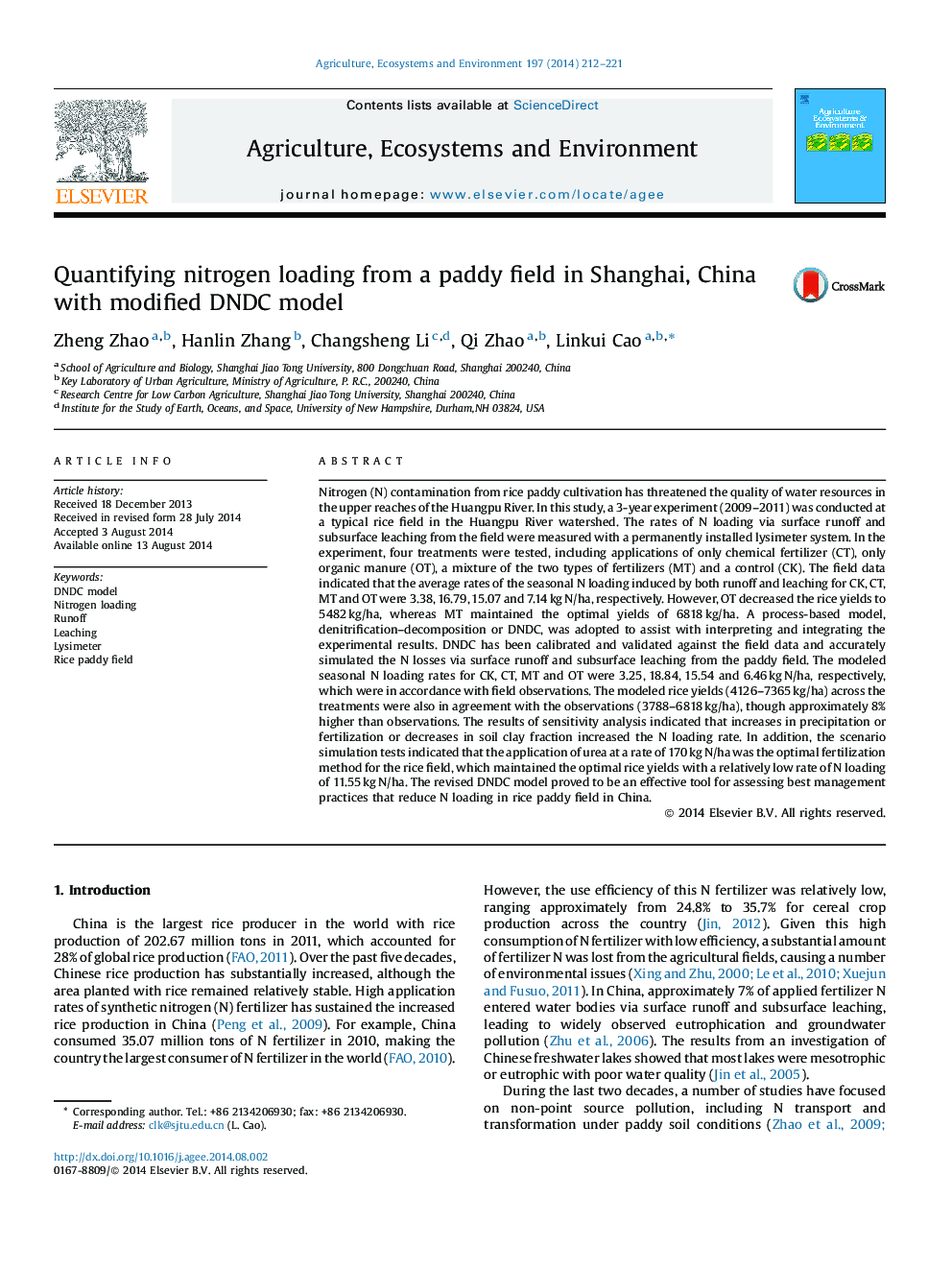| Article ID | Journal | Published Year | Pages | File Type |
|---|---|---|---|---|
| 2413823 | Agriculture, Ecosystems & Environment | 2014 | 10 Pages |
•The DNDC model was modified based on the configuration of the paddy fields and observations.•The revised DNDC accurately simulated N losses through surface runoff and subsurface leaching.•N loading in the paddy field was most sensitive to fertilization and precipitation.•The application of organic manure could substantially reduce N loading in paddy fields, although it would also decrease rice yields.•The application of urea at a rate of 170 kg N/ha was the best fertilization method for rice cultivation.
Nitrogen (N) contamination from rice paddy cultivation has threatened the quality of water resources in the upper reaches of the Huangpu River. In this study, a 3-year experiment (2009–2011) was conducted at a typical rice field in the Huangpu River watershed. The rates of N loading via surface runoff and subsurface leaching from the field were measured with a permanently installed lysimeter system. In the experiment, four treatments were tested, including applications of only chemical fertilizer (CT), only organic manure (OT), a mixture of the two types of fertilizers (MT) and a control (CK). The field data indicated that the average rates of the seasonal N loading induced by both runoff and leaching for CK, CT, MT and OT were 3.38, 16.79, 15.07 and 7.14 kg N/ha, respectively. However, OT decreased the rice yields to 5482 kg/ha, whereas MT maintained the optimal yields of 6818 kg/ha. A process-based model, denitrification–decomposition or DNDC, was adopted to assist with interpreting and integrating the experimental results. DNDC has been calibrated and validated against the field data and accurately simulated the N losses via surface runoff and subsurface leaching from the paddy field. The modeled seasonal N loading rates for CK, CT, MT and OT were 3.25, 18.84, 15.54 and 6.46 kg N/ha, respectively, which were in accordance with field observations. The modeled rice yields (4126–7365 kg/ha) across the treatments were also in agreement with the observations (3788–6818 kg/ha), though approximately 8% higher than observations. The results of sensitivity analysis indicated that increases in precipitation or fertilization or decreases in soil clay fraction increased the N loading rate. In addition, the scenario simulation tests indicated that the application of urea at a rate of 170 kg N/ha was the optimal fertilization method for the rice field, which maintained the optimal rice yields with a relatively low rate of N loading of 11.55 kg N/ha. The revised DNDC model proved to be an effective tool for assessing best management practices that reduce N loading in rice paddy field in China.
